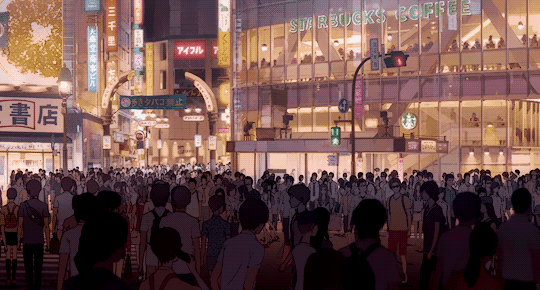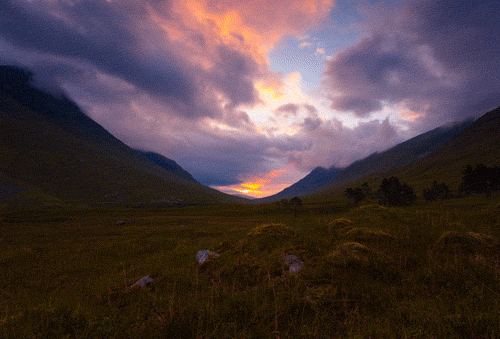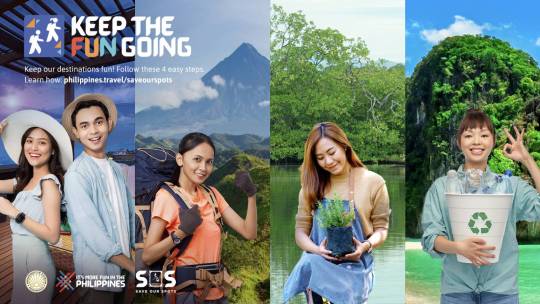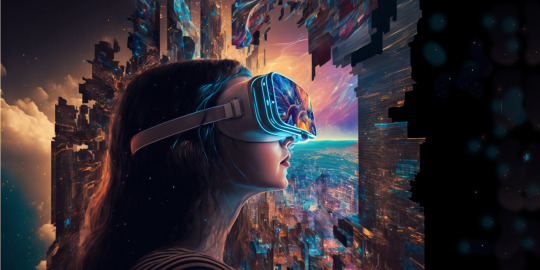#Rise of Virtual Tourism
Explore tagged Tumblr posts
Text
The Rise of Virtual Tourism: Why You Should Still Travel In-Person
Virtual tourism is booming, but real travel offers unmatched sensory, cultural, and personal experiences. Discover why in-person travel still matters.
#Virtual tourism vs in-person travel#why in-person travel still matters#in-person travel#in-person vs.virtual#Physical Travel#Rise of Virtual Tourism#Travel In-Person#Virtual Tour#Virtual Tourism
0 notes
Text
Shocking Trends in Technology and Gadgets
Technology is advancing at an unprecedented pace, transforming not only our methods of communication but also our lifestyles, work habits, and thought processes. The year 2025 is set to be a pivotal moment in the development of gadgets and innovations that influence everyday life. From artificial intelligence and smart wearables to groundbreaking advancements in energy and computing, each innovation is redefining our expectations. What was once considered science fiction is now a reality and frequently integrated into our daily routines. As we anticipate a more interconnected, efficient, and immersive world, the latest trends illustrate a profound integration of technology with human experience.

These transformations extend well beyond merely new smartphone models or sleeker laptops. We are discussing trends that impact health, sustainability, communication, education, and even our experiences with entertainment. This article delves into the most significant and surprising trends in technology and gadgets as they unfold in 2025. Each segment examines how these advancements will influence various industries and what implications they hold for consumers and businesses alike.
For more details visit this
Whether you are a technology enthusiast, a professional in the industry, or simply an interested observer, grasping these forthcoming innovations is crucial. They are poised not only to change how we engage with the world but also to provide insights into the future direction of society. Prepare to discover twenty revolutionary trends that you cannot afford to miss.
II. The Ascendancy of Artificial Intelligence in Daily Life
Artificial Intelligence (AI) has transitioned from a specialized concept limited to researchers and engineers. By 2025, AI is becoming an integral aspect of everyday life, seamlessly woven into our daily activities. Smart assistants have evolved far beyond basic voice commands. They now provide proactive suggestions based on our habits, preferences, and surroundings.
Smartphones continue to be central to our digital lives, and 2025 brings some jaw-dropping innovations. Foldable and rollable displays are now mainstream, offering larger screens without increasing device size. These form factors enhance multitasking, gaming, and content consumption.
AI-powered cameras automatically adjust settings to capture professional-grade photos, recognize documents, and even analyze skin conditions. Battery life has also seen significant improvement thanks to more efficient processors and smarter power management systems.
Biometric enhancements such as under-display fingerprint sensors and facial mapping improve security. Additionally, smartphones now function as hubs for controlling other smart devices, from thermostats to vehicles.
With the integration of satellite connectivity, even remote areas enjoy reliable communication. These upgrades reflect a move toward devices that are not just tools but essential companions in managing digital and real-world tasks.
XI. Rise of the Metaverse
The metaverse has matured from hype to reality. In 2025, it’s a dynamic space for work, play, and socialization. Powered by VR and blockchain, the metaverse offers immersive experiences where users interact with digital environments and avatars.
Social media platforms are integrating metaverse elements, allowing users to attend concerts, business meetings, or even classrooms in virtual spaces. Commerce is thriving through virtual storefronts, where users can shop using cryptocurrency or NFTs.
Hardware advancements like lightweight VR headsets and motion-tracking wearables enhance immersion. Meanwhile, developers focus on interoperability, enabling avatars and assets to move seamlessly across platforms.
Whether it's remote work or digital tourism, the metaverse is reshaping how we connect and collaborate online.
XII. Smart Transportation and Electric Vehicles
Transportation is undergoing a revolution driven by electrification and automation. In 2025, electric vehicles (EVs) are more affordable and widespread, thanks to advances in battery technology and government incentives. EVs offer longer ranges, faster charging, and smart integration with home energy systems.
Self-driving car technology is progressing as well. Autonomous features like lane assist, adaptive cruise control, and automated parking are common. Ride-sharing companies are also piloting robo-taxis in urban centers.
Beyond cars, smart transportation includes connected bicycles, e-scooters, and drones. These innovations contribute to cleaner cities and more efficient travel.
Public transit is also getting smarter with real-time tracking, predictive maintenance, and eco-friendly buses. Together, these trends create a more sustainable and intelligent transportation ecosystem.
2 notes
·
View notes
Text
The Dawn of the Orange Economy in India-Col Rajyavardhan Rathore

Unleashing India’s Creative Potential
India stands at the cusp of an economic revolution — one driven not by traditional industries, but by creativity, culture, and innovation. Colonel Rajyavardhan Rathore, a visionary leader and former Union Minister, has been a vocal advocate for India’s Orange Economy — a term coined by the Inter-American Development Bank to describe the economic potential of arts, culture, and creative industries.
In this blog, we explore Rathore’s vision for India’s Orange Economy, its immense potential, and how it can transform the nation’s economic and cultural landscape.
What is the Orange Economy?
The Orange Economy refers to the economic value generated from cultural and creative industries, including:
🎭 Performing & Visual Arts — Theatre, dance, music, painting, sculpture 📽️ Film & Entertainment — Bollywood, regional cinema, OTT platforms 📚 Publishing & Literature — Books, digital content, storytelling 🎨 Design & Fashion — Handicrafts, textiles, branding 🎮 Gaming & Digital Media — Animation, VFX, e-sports 🏛️ Cultural Heritage & Tourism — Museums, festivals, heritage sites
This sector thrives on human creativity, intellectual property, and cultural capital — resources that India possesses in abundance.
Rajyavardhan Rathore’s Vision for India’s Orange Economy
As a leader who has championed youth empowerment and digital innovation, Rathore recognizes that India’s soft power — its art, music, films, and traditions — can be a global economic force.
Key Pillars of His Vision:
1. “Create in India, for the World”
India must position itself as a global content hub, leveraging its storytelling traditions (Mahabharata, Panchatantra) and modern digital platforms.
Example: “RRR” and “The Elephant Whisperers” winning global acclaim prove India’s creative prowess.
2. Policy Support & Infrastructure
Govt. initiatives like “Creative India” and “Startup India” must integrate creative industries.
Incentives for film shoots, animation studios, and cultural startups to boost employment.
3. Monetizing Cultural Heritage
India’s 50+ UNESCO heritage sites and 8,000+ festivals can drive tourism and creative exports.
Example: “Incredible India” campaigns blending tradition with digital storytelling.
4. Tech Meets Creativity
AI, blockchain, and VR can revolutionize art restoration, virtual museums, and gaming.
Example: “Digital Ramayana” projects and metaverse cultural experiences.
Why India’s Orange Economy Will Thrive
✅ Demographic Dividend — 65% of India is under 35, a youthful, creative workforce. ✅ Untapped Potential — Only 3% of global creative trade comes from India (vs. 40% from US/EU). ✅ Global Demand — Yoga, Ayurveda, Bollywood, and Indian literature have worldwide appeal.
Challenges & The Way Forward
While opportunities are vast, India must address: 🔹 Lack of formal structure for artists & freelancers. 🔹 Copyright & piracy issues hurting creators. 🔹 Funding gaps for independent filmmakers, musicians.
Rathore’s Solutions:
National Creative Policy to protect artists’ rights.
Creative Entrepreneurship Funds for startups.
Skill Development in digital arts, animation, and cultural management.
Conclusion: A New Dawn for India
Rajyavardhan Rathore’s push for the Orange Economy aligns with India’s rise as a Vishwaguru — a global leader in culture and creativity. By investing in this sector, India can:
Generate millions of jobs.
Boost tourism & exports.
Strengthen soft power diplomacy.
The future is orange, and India is ready to shine.
#OrangeEconomy #CreativeIndia #RajyavardhanRathore #VocalForLocal #MakeInIndia
Call to Action
Artists/Creators: Share your work with #OrangeEconomy!
Policymakers: Support creative entrepreneurship.
Youth: Explore careers in gaming, design, and digital arts!
Let’s make India the world’s creative superpower! 🚀🎨
4 notes
·
View notes
Text
Plastic surgery with financing: accessible beauty with Dr. Yily De Los Santos in the Dominican Republic
Did you know you can achieve the body of your dreams without paying everything upfront? More and more patients are choosing financed plastic surgery as a safe, structured way to achieve their cosmetic goals. Dr. Yily De Los Santos, a renowned aesthetic and reconstructive plastic surgeon in the Dominican Republic, explains, “Beauty shouldn’t be an unreachable luxury—it should be a thoughtful decision with accessible options.”
Financing your plastic surgery: a realistic path to transformation
Thanks to the rise of medical tourism in the Dominican Republic, both local and international patients choose this destination not only for its top-tier medical quality but also for its affordable financing plans. Dr. Yily De Los Santos collaborates with institutions that offer medical credit, making it possible to finance:
Liposuction with monthly payments
Breast augmentation with financing
Tummy tuck with credit options
Rhinoplasty and eyelid surgery in installments
“The physical and emotional well-being that comes from a well-performed surgery is priceless. Flexible payment options help more people access life-changing procedures,” says Dr. Yily.
How does plastic surgery financing work?
Patients can access custom payment plans, with fast approval and simple requirements. Even international clients can complete virtual consultations and arrange their financing before traveling.
Connect with us
Are you ready to enhance your appearance and want to explore payment options? Message us, leave a comment, or schedule a virtual consultation with Dr. Yily De Los Santos. Your new self is closer than you think.

1 note
·
View note
Text
Beyond Selfies: How Museums and Zoos Are Winning the Hearts of Gen Z Travelers

Unveiling the Growth Trajectory of the Global Cultural and Natural Attractions Industry
The global Museums, Historical Sites, Zoos, and Parks market is undergoing a transformative expansion, marked by innovation, sustainability, and heightened public engagement. From 2019 to 2023, the museums, historical sites, zoos, and parks market surged from USD 57.1 billion to USD 74.1 billion and is projected to reach USD 116.08 billion by 2031, with a steady CAGR of 6.62% (2024–2031). This growth is a direct result of evolving visitor expectations, rising investments, and the incorporation of advanced digital solutions that optimize operations and visitor satisfaction.
Request Sample Report PDF (including TOC, Graphs & Tables): https://www.statsandresearch.com/request-sample/40594-global-museums-market-analysis-historical-sites-industry-trends
Cultural and Environmental Awakening Drives Visitor Demand
Immersive Experiences Powering a New Era of Engagement
Today’s consumers seek more than passive observation—they crave immersive, educational, and culturally resonant experiences. Museums and historical sites are responding with interactive exhibits, virtual reality journeys, and hands-on learning environments that elevate educational tourism. Augmented reality guides and AI-driven personalization have revolutionized static displays into dynamic narratives.
Similarly, zoos and botanical gardens are evolving into hubs of environmental education and conservation. Initiatives highlighting endangered species, sustainability practices, and biodiversity preservation resonate with a global audience increasingly attuned to eco-conscious travel. Through conservation-themed attractions and eco-friendly design, these institutions are not only adapting—they are leading cultural change.
Get up to 30%-40% Discount: https://www.statsandresearch.com/check-discount/40594-global-museums-market-analysis-historical-sites-industry-trends
Strategic Government Support and Policy Catalysts
Public Sector Funding and Cross-Sector Collaboration
Government investment remains foundational. Countries worldwide recognize the multifaceted value of museums, parks, and heritage sites—not only as educational institutions but as pillars of national identity, tourism, and local economic growth.
Modernization initiatives include:
Restoration of heritage landmarks
Infrastructure upgrades
Biodiversity preservation efforts in zoos
Technology-enhanced public engagement
Crucially, governments are fostering public-private partnerships. These synergies bring innovation and agility through private sector participation, including funding, design, digital integration, and marketing expertise.
Museums, Historical Sites, Zoos, and Parks Market Segmentation Analysis:
By Type: Museums Lead the Cultural Ecosystem
Museums, commanding 34.5% of the global market share, remain the vanguard of cultural education. Their expansive appeal stems from:
Rotating, thematically curated exhibits
Integration of immersive and digital technology
Support from international funding and institutional grants
Museums draw scholars, students, and tourists alike, functioning as dynamic centers for cultural exchange and research.
Historical sites, nature parks, and zoological gardens follow, each offering unique touchpoints—be it architectural heritage, natural biodiversity, or curated ecological experiences.
By Revenue Model: Admission Fees as a Core Driver
Admission fees dominate revenue generation with 42.8% of total market share. High fixed costs related to staff, animal care, exhibit maintenance, and facility management necessitate consistent ticketing income.
Supplementary revenue streams such as:
Memberships and subscriptions
Retail sales and concessions
Donations and sponsorships
…are also growing in relevance, especially among institutions that diversify their services with cafes, guided tours, mobile apps, and branded merchandise.
By Seasonality: High Growth in Seasonal Attractions
Seasonal attractions, encompassing outdoor parks, botanical gardens, and zoos, are set to expand at 6.83% CAGR. Visitor patterns are closely tied to favorable weather, school breaks, and tourist migration, leading to surges during:
Spring and summer holidays
National festivities
Academic field trip seasons
Institutions are increasingly leveraging data analytics to forecast peak periods and adjust operations dynamically for maximum impact.
Regional Insights: Museums, Historical Sites, Zoos, and Parks Market Leadership and Emerging Hubs
North America: Leader in Cultural Capital
North America dominates with 34.2% market share, fueled by its robust infrastructure, institutional funding, and a deeply embedded culture of public education. Key innovations include the deployment of AI-driven personalization and cloud-based visitor management systems.
Europe: Digital and Historical Integration
Holding 29.4%, Europe focuses on fusing historical preservation with digital innovation. From AI-powered visitor flows in the Louvre to augmented reality-enhanced learning in Roman ruins, the region exemplifies intelligent heritage engagement.
Asia-Pacific: Expanding Access and Rising Demand
With 25.2%, Asia-Pacific benefits from growing disposable incomes, urbanization, and significant government initiatives. The rapid development of new parks and museums, particularly in China, India, and Southeast Asia, marks the region as a future global leader.
South America and Middle East & Africa: High Potential Frontiers
South America (7.5%): Employs hybrid models that mix physical and digital touchpoints to overcome geographic and infrastructural limitations.
Middle East & Africa (3.7%): Embraces educational tourism, with governments investing in cultural mega-projects and heritage preservation.
Competitive Landscape and Strategic Innovations
Key Players Shaping the Future of Global Attractions
Leading institutions like:
The Louvre Museum
Smithsonian Institution
Zoologischer Garten Berlin AG
American Museum of Natural History
…are spearheading the evolution of visitor engagement through strategic renovation, digital transformation, and branding.
Notable Developments:
Louvre’s 800M Renovation Plan (2025): Includes a new Mona Lisa gallery, revamped entrances, and subterranean visitor areas.
Digital Partnership with Accenture Interactive: Resulted in a new mobile app, upgraded website, and personalized user experiences.
These projects exemplify how strategic investment and technological alignment enhance scalability, reduce congestion, and improve both educational and recreational value.
Emerging Trends: Redefining the Visitor Experience
Integration of Advanced Technologies
AI-Powered Tour Guidance
Augmented Reality & Virtual Reality Exhibits
Smart Ticketing and Crowd Management
IoT-enabled Conservation Tracking
Such innovations reduce operational costs, improve engagement, and create more inclusive, accessible experiences for all demographics.
Future Outlook: Toward Intelligent, Sustainable, and Inclusive Attractions
The global market is transitioning from static displays to living, responsive environments. As visitor expectations grow and sustainability becomes central to travel decisions, museums, parks, and cultural sites must innovate and adapt.
By prioritizing:
Digital and physical accessibility
Conservation and education
Cross-sector collaboration
Scalable, intelligent systems
these institutions will not only thrive but lead the next era of global tourism and cultural engagement.
Purchase Exclusive Report: https://www.statsandresearch.com/enquire-before/40594-global-museums-market-analysis-historical-sites-industry-trends
Conclusion With rising global interest in heritage, ecology, and immersive education, the Museums, Historical Sites, Zoos, and Parks market stands at the crossroads of technology, culture, and sustainability. Strategic investments, digital transformation, and policy support are set to redefine the sector—turning legacy institutions into future-ready, globally connected ecosystems of knowledge, preservation, and public engagement.
Our Services:
On-Demand Reports: https://www.statsandresearch.com/on-demand-reports
Subscription Plans: https://www.statsandresearch.com/subscription-plans
Consulting Services: https://www.statsandresearch.com/consulting-services
ESG Solutions: https://www.statsandresearch.com/esg-solutions
Contact Us:
Stats and Research
Email: [email protected]
Phone: +91 8530698844
Website: https://www.statsandresearch.com
1 note
·
View note
Text
Danielle Esposito Staten Island Adventure Sports: Future Trends to Erase Your Bucket List Blues
Adventure sports are rapidly evolving, offering more than just the traditional thrill-seeking experiences. With the rise of innovative technologies and sustainable practices, the future of adventure sports promises to be both exciting and environmentally conscious. Danielle Esposito Staten Island Adventure Sports: Unveiling the Future of Physical Exploration highlights these advancements and their impact. This article delves into the future trends in adventure sports that can help you erase your bucket list blues while contributing to a better world.

The Rise of Eco-Friendly Adventure Sports
One of the most significant trends in adventure sports is the emphasis on sustainability. Eco-friendly adventure sports are becoming increasingly popular as athletes and enthusiasts seek to minimize their environmental footprint. From electric-powered surfboards to solar-powered camping gear, the industry is innovating to provide greener options for adventure lovers. These advancements not only reduce environmental impact but also enhance the overall experience by aligning with the growing desire for sustainable travel.
Virtual Reality: Redefining Adventure
The realm of adventure sports is being transformed by Virtual Reality (VR), revolutionizing the way we perceive and engage with these exhilarating activities.. VR technology allows enthusiasts to engage in thrilling activities from the comfort of their homes. Whether it’s paragliding over the Swiss Alps or scuba diving in the Great Barrier Reef, VR makes it possible to experience these adventures without the logistical challenges and environmental impact of traditional travel. This trend is particularly appealing to those who may have physical limitations or financial constraints, making adventure sports more accessible to a broader audience.
Personalized Adventure Experiences
The future of adventure sports is also leaning towards hyper-personalization. With advancements in AI and big data, companies can now tailor adventure experiences to individual preferences and skill levels. Personalized itineraries, real-time coaching, and customized gear recommendations ensure that every adventure is unique and suited to the participant’s needs. This trend not only enhances safety but also ensures that adventurers get the most out of their experiences, thereby reducing the likelihood of bucket list blues.
Adventure Sports for Wellness
The fusion of adventure sports with wellness is an increasingly popular trend, where activities like yoga retreats paired with hiking, mountain biking, or kayaking excursions are gaining traction. These experiences aim to provide holistic well-being, offering a blend of physical challenges and mental relaxation. By combining adventure with wellness, participants can achieve a balanced lifestyle, promoting overall health and happiness, allowing adventurers to fulfill their bucket list aspirations while simultaneously enhancing their well-being.
Technology-Enhanced Safety Measures
Safety is a paramount concern in adventure sports, and technological advancements are playing a crucial role in enhancing it. From GPS tracking devices and drones to advanced weather forecasting tools, technology is making adventure sports safer than ever before. Wearable tech, such as smart helmets and impact sensors, provides real-time data and alerts, helping to prevent accidents and injuries. These innovations ensure that adventurers can enjoy their experiences with greater peace of mind, reducing anxiety and boosting confidence.
Community and Social Impact
Adventure sports are increasingly being used as a platform for social change. Initiatives that promote community engagement and environmental stewardship are on the rise. For example, adventure tourism operators are partnering with local communities to create sustainable tourism models that benefit both the environment and the local economy. By participating in these socially responsible adventures, enthusiasts can contribute to positive change while fulfilling their own bucket list dreams.
Conclusion
The future of adventure sports is bright and full of potential. By embracing eco-friendly practices, leveraging cutting-edge technology, and focusing on personalized and wellness-oriented experiences, the industry is poised to offer exciting and sustainable options for adventure seekers. As these trends continue to evolve, adventure sports will not only help individuals erase their bucket list blues but also contribute to a more responsible and interconnected world. Danielle Esposito Staten Island - Bucket List Blues showcases how these advancements are shaping the future of adventure sports. So, get ready to embark on new adventures that promise not only to thrill but also to make a positive impact on our planet.
4 notes
·
View notes
Text


Navigating the Evolving Travel Trends: Past, Present, and Future✈️




The past five years have seen the travel industry undergo a seismic shift, shaped by unforeseen circumstances, evolving priorities, and technological advancements.

Past Trends (2019-2024):
1. Rise of Staycations and Local Travel: With global uncertainty, people sought comfort in familiar surroundings, boosting local tourism and staycations. This trend also fueled the popularity of unique, nearby experiences like glamping or micro-adventures.
2. Experiences over Destinations: Travelers craved deeper connections and immersion, prioritizing authentic experiences over simply ticking off landmarks. This led to a surge in cultural tours, voluntourism, and off-the-beaten-path adventures.
3. Bleisure Travel: The lines between business and leisure blurred as remote work options became more prevalent. Travelers extended business trips to include leisure activities, driving demand for flexible booking options and co-working spaces in tourist destinations.
4. Sustainability in Focus: Environmental consciousness grew, leading to a rise in eco-friendly travel choices. Travelers sought out sustainable accommodations, responsible tours, and destinations committed to conservation.
5. Tech-Driven Transformation: Technology played an increasingly crucial role, from AI-powered travel recommendations to contactless payments and immersive virtual tours. This trend also fueled the growth of travel apps and online booking platforms.

Possible Future Trends (2024-2029):
1. Hyper-Personalization: Travel will become increasingly tailored to individual preferences, with AI and machine learning creating bespoke itineraries and experiences based on unique interests, travel styles, and budgets.
2. Wellness & Retreats: The focus on mental and physical wellbeing will continue, with travelers seeking destinations and experiences that promote mindfulness, relaxation, and holistic rejuvenation.
3. Transformative Travel: The desire for personal growth and self-discovery will drive demand for transformative travel experiences, such as volunteering, cultural immersion programs, and journeys focused on personal development.
4. Space Tourism: As technology advances and costs decrease, space tourism could become more accessible, offering a unique and futuristic travel experience for a select few.
5. Metaverse Travel: Virtual and augmented reality experiences will continue to evolve, potentially offering immersive travel simulations that allow people to explore destinations without physically being there.

The past five years have painted a dynamic picture of travel trends. Driven by changing lifestyles, social values, and technological advancements, travelers have embraced experiences over mere sightseeing, pursued self-discovery through solo adventures, and sought responsible, personalized journeys.
Looking ahead, several exciting possibilities emerge. Hyper-personalization will be key, with tech facilitating highly customized itineraries that resonate deeply with individual aspirations. Wellness and retreat travel will boom, as people seek mental, physical, and spiritual rejuvenation. Additionally, destination stewardship will take center stage, with travelers actively partnering with locals to preserve cultures and environments.
This evolving landscape presents both challenges and opportunities. The travel industry must adapt to offer personalized experiences at scale, cater to the growing wellness market, and integrate sustainable practices seamlessly. Travelers, meanwhile, have the power to choose wisely, supporting responsible tourism and contributing to positive change.
While technology will play a vital role, human connection will remain paramount. Authentic interactions, cultural immersion, and meaningful experiences will be the true differentiators in this new era of travel. Ultimately, the future of travel promises a deeper, more personalized, and responsible way to explore the world, driven by our collective desire for connection, transformation, and discovery.
These are just a glimpse into the ever-evolving world of travel. As we move forward, sustainability, personalization, and transformative experiences will likely take center stage, while technology will continue to reshape how we plan, book, and experience travel. The future of travel promises to be exciting, diverse, and deeply attuned to the evolving needs and desires of travelers worldwide.

#travel writing & photography#travel writing#travel#adventure#blog#writing#trends#gif anime#gifset#dividers#cute#div cr plutism
9 notes
·
View notes
Text

Future Trends: The Increasing Popularity of VR CGI in Digital Narratives
As technology improved, one exciting trend is the rising use of VR CGI in digital narratives. This innovative approach immerses audiences in stories like never before, blending virtual reality with stunning computer-generated imagery.
In this post, we will explore how VR CGI is transforming storytelling across various media, including xml epg guide, xmltv generator, and interactive experiences.
Extended Reality (XR), encompassing Virtual Reality (VR), Augmented Reality (AR), and Mixed Reality (MR), is poised to revolutionize the digital narrative landscape by merging the physical and virtual worlds.
As XR technologies advance, they are finding applications across numerous fields, enhancing user experiences and enabling new ways of interaction.
In the realm of digital narratives, this means a transformative shift towards more immersive and interactive storytelling formats.
For instance, interactive narratives will allow audiences to influence the direction of stories through choices, creating a personalized and dynamic storytelling experience. This level of interactivity, supported by gamification elements such as challenges and rewards, will make narratives not only more engaging but also deeply memorable.
Understanding the Popularity of VR CGI in IPTV EPG
The integration of AI in storytelling is set to redefine audience engagement, with AI-generated characters and chatbots improved based on user interactions. This dynamic personalization will tailor stories to individual preferences, enhancing emotional resonance and relevance.
Furthermore, user-generated storytelling platforms are empowering audiences to become storytellers themselves, fostering a rich diversity of narratives and perspectives. This shift is supported by advanced software capabilities that cater to a younger, digitally savvy audience, driving narrative innovation.
Rise of VR CGI in IPTV: Future XMLV EPG Trends
In the context of xmltv epg m3u and Mfiles technology, the use of immersive 360 VR experiences can evoke a strong sense of presence, making viewers feel like participants rather than mere observers. Directing attention in 360 VR storytelling remains a challenge, requiring innovative techniques to guide viewers to key story elements.
However, the potential for non-linear narratives in 360 VR allows viewers the freedom to explore different perspectives and storylines, enhancing the narrative depth and engagement. This integration of VR and CGI within XMLTV blogs can significantly enhance the viewer's experience, making the guide itself a part of an interactive entertainment experience.

Bringing Digital and Physical Worlds Together
Augmented Reality (AR) and Virtual Reality (VR) technologies are pioneering the fusion of digital and physical realms, offering enhanced perceptions and interactions with the real world. AR overlays digital information onto the physical environment in real-time, using sophisticated tracking and rendering to blend virtual elements seamlessly.
This technology has not only captured the public's imagination through applications like Pokémon Go and Snapchat filters but is also expanding into sectors like retail, advertising, and tourism, enhancing user experiences by providing contextual information in an interactive format.
On the other hand, VR immerses users in a completely virtual environment, crafted to deliver a compelling sense of presence through multi-sensory feedback. This technology is employed across various fields including gaming, training simulations, and tourism, where it provides unique, immersive experiences that are profoundly engaging.
In educational settings, VR transforms learning by enabling interactive experiences that improve retention and engagement, such as virtual field trips or complex scientific simulations.
The convergence of AR and VR into Mixed Reality (MR) represents a significant leap towards blending the digital and physical worlds. MR allows for a spectrum of experiences where digital and real-world elements coexist and interact in real-time, offering new possibilities in gaming, entertainment, and beyond.
For instance, in architecture and design, MR can streamline design processes and enhance client presentations by superimposing proposed architectural changes onto existing physical spaces.
In healthcare, MR applications assist in complex surgical procedures by overlaying critical information onto the surgeon’s field of view, improving precision and patient outcomes. This integration of digital and physical realities is not only redefining user experiences but also setting new benchmarks in how we interact with and perceive our environment.
Optimization of VR Applications for XMLTV Generator
Throughout this article, we have traversed the innovative landscapes where virtual reality (VR) CGI and XMLTV converge, offering a glimpse into the future of ultra-immersive storytelling and content presentation in technology blogs.
The integration of VR CGI with XMLTV not only enriches the user experience by providing a dynamic and engaging way to explore program guides but also sets a new bar for the presentation of information.
Crafting content that leverages these technologies invites readers into a world where they are no longer passive consumers but rather active participants in an immersive journey.
The examples and use cases discussed underscore the practical applications and the transformative potential of merging VR CGI with XMLTV, from interactive program previews to enhanced storytelling that deeply resonates with the audience.
Acknowledging the boundless possibilities, it's clear that the amalgamation of VR CGI and XMLTV within technology blogs represents a pioneering step towards redefining digital narratives and user experience.
For content creators and technologists alike, understanding and harnessing this synergy is critical in crafting blogs that not only inform but also mesmerize and engage.
As we look forward, embracing these advancements could very well dictate the success and relevance of digital content within the ever-changing domain of technology and media.
As part of exploring this vast potential and ensuring content remains relevant and engaging, we invite you to uncover the boundless potential of Virtual Reality CGI and elevate your XMLTV Technology Blog by checking out our blog post and experiencing the ease of Entertainment Technology through XMLTV EPG for IPTV Guide.
Want to know more? You can visit this web page and discover the advantages it brings to every tech-savvy individuals and why content creators are captivated by these immersive narratives.
youtube
6 notes
·
View notes
Text
Virtual Try-on App Development: Benefits, Examples and Use Cases

The world of retail is undergoing a dynamic transformation. With the rise of e-commerce, consumers are increasingly shopping online for convenience and wider product selection. However, one major challenge persists: the inability to physically try on products before purchase. This can lead to size and style uncertainties, ultimately resulting in frustrating returns and lost revenue for businesses.
Here's where virtual try-on (VTO) technology steps in, revolutionizing the online shopping experience. Mobile Apps in Phoenix focused on VTO are rapidly gaining traction, offering a solution for both consumers and businesses.
Unveiling the Benefits of Virtual Try-on App Development
Virtual try-on technology leverages augmented reality (AR) and artificial intelligence (AI) to create a realistic experience where users can virtually "try on" clothes, accessories, makeup, and other products through their mobile devices. This innovative technology offers a plethora of benefits for both consumers and businesses:
Benefits for Consumers:
Enhanced Shopping Confidence: VTO apps alleviate size and style concerns, fostering a more confident purchase journey.
Increased Engagement and Fun: The ability to virtually experiment with different styles and colors transforms shopping from a chore into an interactive and enjoyable experience.
Improved Decision-Making: VTO allows users to visualize how products look on them, leading to more informed purchase decisions and reduced returns.
Benefits for Businesses:
Reduced Returns and Increased Sales: By resolving size and style uncertainties, VTO apps can significantly reduce return rates and boost sales.
Enhanced Customer Experience: VTO creates a more interactive and engaging experience, fostering customer loyalty and satisfaction.
Valuable Customer Data Insights: VTO apps can track user preferences and behavior, providing valuable data for product development and marketing strategies.
Phoenix App Development Services: Examples and Use Cases of Virtual Try-on Apps
VTO technology has the potential to transform various retail sectors. Here's a glimpse into the exciting possibilities for Phoenix App Development Services in the realm of virtual try-on:
Fashion and Apparel:
Phoenix-based startups can leverage VTO technology to develop mobile apps that allow users to virtually try on clothing, shoes, and accessories. Imagine trying on a pair of sunglasses or a new outfit from the comfort of your couch!
Beauty and Cosmetics:
VTO apps can be developed to allow users to experiment with different makeup shades, hairstyles, and contact lenses. This personalized experience can empower users to make informed purchasing decisions.
Jewelry and Eyewear:
Phoenix App Development companies can create VTO apps specifically designed for jewelry and eyewear. Users can virtually see how different pieces look on their faces or bodies, leading to a more confident shopping experience.
Home Decor and Furniture:
Imagine visualizing a new couch in your living room or a painting on your wall before purchase. VTO apps can be developed for furniture and home decor, allowing users to make more informed decisions about their living spaces.
Beyond Retail: Exploring Additional Use Cases
The possibilities extend beyond retail. Phoenix App Development Services can be applied to create VTO experiences in other industries:
Healthcare: VTO apps can be used to virtually try on medical devices or prosthetics.
Automotive: Users could virtually "test drive" different car models in different colors and configurations.
Travel and Tourism: Imagine virtually experiencing a hotel room or vacation destination before booking.
The Future of Virtual Try-on: A Phoenix Soaring High
Virtual try-on technology is still in its nascent stages, but its potential is vast. As AI and AR continue to evolve, we can expect even more immersive and realistic VTO experiences in the future.
Here are some exciting possibilities for the future of VTO:
Integration with Social Media: Imagine sharing your virtual try-on experience on social media for feedback or recommendations.
Customization and Personalization: VTO apps will become even more personalized, tailoring experiences based on user preferences and body types.
Integration with Smart Mirrors: Physical stores could incorporate smart mirrors with VTO technology for a seamless try-on experience.
Mobile Apps in Phoenix: Net-Craft.com - Your Partner for Innovative App Development
At Net-Craft.com, a leading Mobile App Development company in Phoenix, Arizona, we're passionate about staying at the forefront of cutting-edge technologies. We offer comprehensive Phoenix App Development Services, including expertise in VTO app development.
Our team of experienced developers can help you create a custom mobile app that leverages VTO technology to enhance the user experience, boost sales, and position your business at the forefront of innovation.
Ready to transform your online shopping experience with virtual try-on? Contact Net-Craft.com today for a free consultation!
Know more https://www.net-craft.com/blog/2024/10/22/benefits-virtual-try-on-app-development/
#Mobile App Development Phoenix#Phoenix App Development Services#Mobile Apps in Phoenix#Phoenix Startup App Launch
1 note
·
View note
Text
The shifting focus of travelers
In the past few years that have passed, travel trends have undergone a different motion of change. As traveling has been part of the nature of human beings since the early age of the world, But as we went on with this process of uncovering new information and preferences, we learned how to cope with the changes around us. The rise of these new ways to enjoy traveling reshaped the global travel landscape.
Somewhere in the 2000s to 2005, there was a huge growth opportunity for affordable travel. This transformative period makes it more accessible for a wider audience. Since one of the factors that consumers are concerned about is the cost of their fare, Different aviation companies come up with the idea of reducing in-flight amenities and focusing on point-to-point travel. As a result, the new generation, which prioritizes affordability and flexibility, is attracted to this kind of scheme.
Also, as the pandemic struck, a lot of travel restrictions were created to prevent the spread of the disease, which caused a lot of damage to the tourism industry. While we were there, online virtual tours were made. Virtual tourism has made a huge impact on the experiences of many travelers around the globe. It allows travelers to see from a different perspective what the technologies can do and offer. In 2022, when all the restrictions are lifted, a lot of people will return to travel, but in today’s time, travelers are more concerned with immersing themselves in wellness practices that will prolong the lives of everyone. People are more likely to visit resorts and hotels that offer the latest biohacks.

In the future, astrotourism, adventure tourism, and cool-cationing will be the top travel trends. As people are looking for more adventurous and out-of-this-world experiences, Astrotourism is raising an interest in exploring outer space and discovering new things there. Adventure tourism is the main motivation for the new generation's travel bucket list. Lastly, cool-cationing, where travelers go to destinations with cooler temperatures, is a trend.
6 notes
·
View notes
Text
Global DMC Solutions in Dubai: Elevating Your MICE Experience
In the bustling realm of Meetings, Incentives, Conferences, and Exhibitions (MICE) tourism Dubai stands tall as a vibrant hub teeming with opportunities and trends that event planners simply can't ignore. Let's embark on a journey through the latest trends and invaluable tips tailored for event planners venturing into Dubai's dynamic MICE scene, with a spotlight on how Global DMC travel solutions play a pivotal role in elevating MICE experiences.
1. Trends Redefining Event Landscapes
Dubai's MICE landscape is in the midst of a renaissance, embracing trends that cater to diverse preferences and evolving industry standards. From hybrid event formats that blend virtual and physical experiences to immersive technology integrations like augmented reality (AR) and virtual reality (VR), event planners have a myriad of innovative tools at their disposal.
2. Seamless Logistics with Global DMC Travel Solutions
One of the keys to unlocking a successful MICE event in Dubai is seamless logistics management, and Global DMC travel solutions excel in this arena. With their expertise in transportation, accommodation, and on-ground support, event planners can focus on curating unforgettable experiences while leaving the logistical intricacies to the experts.
3. The Rise of Experiential Meetings: Creating Memorable Attendee Experiences
Gone are the days of passive conferences; attendees now crave immersive and experiential meetings. Dubai's MICE scene has embraced this trend wholeheartedly, offering unique experiences such as desert safaris, cultural tours, and interactive workshops that leave a lasting impact on participants.
4. Sustainable Events: Green Initiatives Shaping Dubai's MICE Industry
Sustainability is no longer an afterthought but a core pillar of MICE events in Dubai. From eco-friendly venues equipped with renewable energy solutions to waste reduction initiatives and carbon offset programs, event planners can align their events with sustainable practices while contributing to Dubai's green initiatives.
5. Tech Innovations Driving Engagement: Leveraging Digital Solutions for Impactful Events
Technology continues to revolutionize MICE tourism in Dubai, with innovations like AI-powered event analytics, live polling tools for audience engagement, and mobile event apps that streamline communication and networking. Event planners can harness these tech advancements to create immersive and interactive experiences that resonate with attendees.
Navigating Dubai's MICE Scene: Tips for Event Planners
Understand Cultural Sensitivities: Dubai's cultural nuances play a significant role in event planning. Familiarize yourself with local customs and etiquette to ensure a smooth and respectful experience for all participants.
Plan Ahead for Permits and Regulations: Dubai has specific regulations and permit requirements for events. Work closely with Global DMC travel solutions to navigate these processes and secure necessary approvals well in advance.
Embrace Collaboration and Partnerships: Leverage partnerships with local vendors, venues, and suppliers to enhance your event's offerings and create memorable experiences for attendees.
Stay Flexible and Adapt: The MICE landscape is constantly evolving. Stay agile and be prepared to adapt your plans based on emerging trends, attendee feedback, and industry dynamics.
Focus on Delegate Experience: Ultimately, the success of a MICE event in Dubai hinges on the delegate experience. Prioritize attendee satisfaction, engagement, and comfort to ensure a memorable and impactful event.
In conclusion, Dubai's MICE tourism presents a wealth of opportunities for event planners seeking to create exceptional experiences. By staying abreast of the latest trends, leveraging Global DMC travel solutions for seamless logistics, and focusing on attendee engagement and sustainability, planners can unlock the full potential of Dubai's dynamic MICE scene.
#DubaiMICE#EventPlanning#GlobalDMC#EventSuccess#MICEInsights#DubaiTrends#MICEExperts#EventProfs#DMCSolutions#MICETravel
2 notes
·
View notes
Text
The Impact of Film and Video on Society
Film and video have profoundly impacted society in various ways, shaping culture, politics, social behavior, and individual identity. Here are some key effects:
1. Cultural Influence:
Storytelling and Shared Narratives: Films and videos serve as powerful storytelling tools that create shared cultural narratives. They convey societal values, norms, and ideals, influencing how people perceive the world and their place within it.
Globalization of Culture: The global distribution of films and videos has facilitated the spread of cultural ideas across borders, promoting cultural exchange but also raising concerns about cultural homogenization and the dominance of certain cultures over others.
2. Social and Political Impact:
Awareness and Advocacy: Films and documentaries have been instrumental in raising awareness about social and political issues, from civil rights movements to environmentalism. They can mobilize public opinion and inspire activism.
Propaganda and Persuasion: Throughout history, films have also been used as tools of propaganda, shaping public opinion and reinforcing political ideologies, particularly during times of war or political unrest.
3. Behavior and Social Norms:
Shaping Social Norms: Film and video often depict societal norms, behaviors, and expectations, influencing how individuals perceive gender roles, relationships, and other social constructs. This can reinforce stereotypes or challenge them, depending on the content.
Consumer Behavior: Advertising through video content has a significant impact on consumer behavior, influencing buying decisions and popularizing trends.
4. Identity and Representation:
Representation of Diversity: Film and video provide platforms for representing diverse identities, including different races, genders, sexual orientations, and cultures. Positive representation can foster inclusivity and self-acceptance, while negative or stereotypical portrayals can perpetuate prejudice.
Identity Formation: Individuals often see themselves reflected in film and video, influencing their identity formation and how they relate to others in society. This is particularly impactful for marginalized communities seeking representation.
5. Education and Information:
Educational Content: Films and videos are widely used as educational tools, providing accessible and engaging ways to learn about history, science, and other subjects. Visual storytelling can enhance understanding and retention of information.
Misinformation: On the downside, the spread of video content also facilitates the dissemination of misinformation, especially in the digital age, where videos can go viral without verification.
6. Technological and Artistic Innovation:
Artistic Expression: Film and video have expanded the possibilities for artistic expression, combining visual, auditory, and narrative elements to create new forms of art. This has led to the development of various film genres, styles, and techniques.
Technological Advancements: The evolution of film and video technology has driven innovation in both the arts and other fields, from CGI in movies to virtual reality experiences that blur the line between fiction and reality.
7. Social Connectivity and Communication:
Social Media and Video Content: The rise of platforms like YouTube, TikTok, and Instagram has democratized video production, allowing individuals to create and share content widely. This has revolutionized how people communicate, share information, and build communities online.
Impact on Attention Span: The proliferation of short-form video content, particularly on social media, has raised concerns about its impact on attention spans and the quality of discourse.
8. Economic Impact:
Entertainment Industry: The film and video industry is a significant economic driver, creating jobs and generating revenue globally. It also influences tourism, fashion, and other industries.
Piracy and Intellectual Property: The digital distribution of films and videos has also led to challenges with piracy, affecting the economic model of the entertainment industry.
9. Psychological and Emotional Impact:
Emotional Engagement: Films and videos have the power to evoke strong emotional responses, from joy and laughter to fear and sadness. This emotional engagement can have therapeutic effects or, conversely, contribute to emotional desensitization.
Escapism and Coping Mechanism: For many, watching films or videos serves as a form of escapism, providing a temporary reprieve from the stresses of everyday life and offering a means of coping with personal challenges.
10. Ethical and Moral Reflection:
Moral Dilemmas: Films often explore complex moral dilemmas, prompting viewers to reflect on their values and beliefs. This can lead to greater empathy and ethical consideration in real-life situations.
Impact on Violence and Behavior: The portrayal of violence in films and videos has sparked debates about its potential influence on behavior, particularly among young audiences, leading to discussions about censorship and responsible media consumption.
Film and video have transformed society by shaping culture, influencing behavior, driving technological innovation, and providing new ways to communicate and express ideas. While they offer significant benefits in education, entertainment, and social awareness, they also pose challenges related to representation, misinformation, and ethical considerations. As these mediums continue to evolve, their impact on society will likely grow, further intertwining with our daily lives and collective consciousness.
#philosophy#epistemology#knowledge#learning#education#chatgpt#psychology#Film and Society#Cultural Influence#Social Impact#Media Representation#Political Propaganda#Identity Formation#Educational Media#Technological Innovation#Social Media#Consumer Behavior#Entertainment Industry#Misinformation#Psychological Impact#Moral Reflection#Video Content#Globalization of Culture#Artistic Expression#Media Ethics#Attention Span
1 note
·
View note
Text
The Future of Digital Advertising
In the ever-evolving landscape of digital marketing, staying ahead of the curve is paramount for businesses striving to remain competitive and relevant. As technology continues to advance and consumer behaviors evolve, new trends emerge, reshaping the digital marketing landscape. In this article, we'll explore some of the most prominent emerging trends in digital marketing and speculate on what the future holds for this dynamic industry.
1.Artificial Intelligence (AI) and Machine Learning:
AI and machine learning have already made significant strides in revolutionizing digital marketing, and their influence is only expected to grow. AI-powered chatbots, personalized recommendation engines, and predictive analytics are just a few examples of how AI is transforming marketing strategies. In the future, we can anticipate even more sophisticated AI applications, such as predictive content creation, advanced customer segmentation, and dynamic pricing optimization.
2.Voice Search Optimization (VSO):
With the rising popularity of voice-activated devices and virtual assistants, voice search is poised to become a dominant force in digital marketing. Businesses will need to adapt their SEO strategies to accommodate natural language queries and conversational search patterns. Optimizing content for voice search, leveraging schema markup, and focusing on local SEO will be key tactics for brands looking to capitalize on this emerging trend.
3.Augmented Reality (AR) and Virtual Reality (VR):
AR and VR technologies have the potential to revolutionize the way consumers interact with brands and products. From immersive shopping experiences to virtual try-on features, AR and VR offer exciting opportunities for marketers to engage audiences in new and innovative ways. As these technologies become more accessible and mainstream, we can expect to see widespread adoption across various industries, including retail, entertainment, and tourism.
4.Interactive Content Experiences:
As consumers increasingly seek out interactive and engaging content, marketers are embracing interactive content formats such as quizzes, polls, calculators, and 360-degree videos. These interactive experiences not only capture users' attention but also provide valuable insights into their preferences and behaviors. Moving forward, we can anticipate the continued growth of interactive content as brands look for creative ways to stand out in a crowded digital landscape.
5.Privacy and Data Protection:
In light of increasing concerns about data privacy and security, consumers are becoming more cautious about sharing their personal information online. As a result, there is a growing emphasis on transparency, consent, and data protection in digital marketing practices. Brands that prioritize privacy and build trust with their audience will have a competitive advantage in the future, while those that neglect these considerations may face backlash and reputational damage.
6.Purpose-Driven Marketing:
Today's consumers expect more from brands than just products and services—they want to support companies that align with their values and beliefs. Purpose-driven marketing, which focuses on social responsibility, sustainability, and ethical business practices, is gaining traction as consumers seek out brands that make a positive impact on society and the environment. In the future, we can expect to see more brands integrating purpose-driven messaging into their marketing campaigns and corporate branding efforts.
In conclusion, the future of digital marketing is filled with exciting possibilities and opportunities for innovation. By embracing emerging trends such as AI, voice search optimization, AR/VR, interactive content, privacy protection, and purpose-driven marketing, businesses can position themselves for success in an increasingly competitive digital landscape. However, staying ahead of the curve requires continuous adaptation, experimentation, and a willingness to embrace change. As we look to the future, one thing is certain: the only constant in digital marketing is change.
3 notes
·
View notes
Text
Tourism Market: Trends, Growth, and Industry Players
Introduction
The global tourism market is a dynamic sector that continually evolves in response to changing consumer preferences, technological advancements, and global events. As we delve into the current landscape, it is crucial to explore the tourism market size, growth patterns, industry trends, and key players that shape the sector's trajectory.
Tourism Market Size and Growth
The tourism market has witnessed remarkable growth over the past decade. According to the latest data the global international tourist arrivals reached 1.5 billion in 2022, marking a 4% increase from the previous year. The tourism industry's robust growth is attributed to factors such as increased disposable income, improved connectivity, and a growing middle class in emerging economies.

The COVID-19 pandemic, however, significantly impacted the industry in 2020 and 2021. International tourist arrivals plummeted by 74% in 2020, representing the largest decline in the industry's history. As the world recovers from the pandemic, tourism is experiencing a resurgence. The UNWTO estimates that international tourist arrivals will surpass pre-pandemic levels by 2023, emphasizing the sector's resilience.
Tourism and Hospitality Industry Trends
The tourism and hospitality industry is undergoing transformative changes driven by technological advancements and shifting consumer behaviors. One notable trend is the rise of sustainable tourism. Travelers are increasingly prioritizing destinations and businesses that adopt eco-friendly practices. Hotels, airlines, and tour operators are responding by implementing sustainable initiatives to meet the demands of environmentally conscious travelers.
Another trend shaping the industry is the integration of technology. From mobile apps for seamless bookings to virtual reality experiences, technology is enhancing the overall travel experience. The use of artificial intelligence and big data analytics is also becoming prevalent, enabling businesses to personalize services, predict consumer preferences, and optimize operations.
Tourism Industry Players
The tourism market is comprised of a diverse range of players, including governments, international organizations, tour operators, airlines, hotels, and online travel agencies (OTAs). Notable industry players such as Airbnb, Expedia, and Booking. com have disrupted traditional hospitality models, offering travelers a wide array of accommodation options and personalized experiences.
Governments play a crucial role in shaping the tourism landscape through policies, infrastructure development, and destination marketing. Collaborations between public and private sectors are essential to foster sustainable growth and address challenges such as over-tourism and environmental impact.

Tourism Market Analysis
A comprehensive analysis of the tourism market involves assessing key factors such as market dynamics, competitive landscape, and regulatory environments. The Asia-Pacific region has emerged as a powerhouse in the tourism sector, with countries like China, India, and Japan experiencing substantial growth. In contrast, established destinations in Europe and North America continue to attract millions of tourists annually.
The post-pandemic recovery has prompted a shift in travel preferences, with a surge in demand for domestic and outdoor experiences. Travelers are seeking off-the-beaten-path destinations, contributing to the diversification of the tourism market.
Travel and Tourism Industry Outlook
Looking ahead, the outlook for the travel and tourism industry is optimistic. The industry is expected to rebound strongly, driven by pent-up demand, increased vaccination rates, and the easing of travel restrictions. The global tourism market is projected to reach $11.38 trillion by 2027, growing at a CAGR of 6.1% from 2020 to 2027.
In conclusion, the tourism market is a vibrant and resilient sector that continues to adapt to changing circumstances. Understanding the market size, growth trends, industry players, and emerging dynamics is crucial for stakeholders navigating the evolving landscape. As the world reopens for travel, the industry's ability to innovate and embrace sustainable practices will play a pivotal role in shaping its future success.
#market research#business#ken research#market analysis#market report#market research report#travel and tourism sector#travel and tourism market#travel and tourism industry#tourism sector#tourism market trends#tourism market size#tourism market players#tourism market forecast
2 notes
·
View notes
Text
Wellness travel amidst of pandemic
The travel industry has suffered significant damage in the past years due to the overall travel restriction that has a huge impact that resulted in a decrease in the global revenue from the travel and tourism industry. The previous pandemic has prompted people to be more aware of their physical and mental health leading to the growth of wellness travel. This past few years has greatly affected risk management, service delivery, travel pattern, distribution channel, avoidance of overpopulated destinations, and hygiene and safety through the tourist travel risk and management perceptions. The sudden stop in the demand for travel and tourism related activities resulted in severe loss of revenues and surge in unemployment across all tourism enterprises. Some previous travel trends are the adventure travel in which emerged after the pandemic ended like active ecotourism. Also the solo travel in which is suitable for those who want to break from their routines briefly. In the days where travel trends is adjusting in what pandemic have done, we already know how crucial technology is in the modern hospitality and tourism industry.As the pandemic ends, tech innovations are expected to continue bringing ease to the travel experience in the future, with top advancements including mobile apps, automation, digital payments and also some virtual tours. Experiential travel also active that many travelers have grown bored with ordinary vacations leading to the rise of the experience tourism trend. The industry continues to face a prolonged and widespread labor shortage specially in the next year's in the travel trends. This will enhance some trends like travel tech adoption accelerates in which all businesses, technology is presenting the travel industry with seemingly endless opportunities that the pandemic is about to increase the speed of it. Now that pandemic is ended, corporate activities such as business trips are making a comeback, but they are rebranding to be more productive again. Today, it has rebounded and is entering a new era after the pandemic bringing about changes, challenges, and the emergence of trends.
2 notes
·
View notes
Text
"VOGUE OF DIGITAL ADVANCEMENT: THE SIGNIFICANCE OF TECHNOLOGICAL EXISTENCE FOR TRAVELERS’ UNPRECEDENTED EXPERIENCE"
Modern tourism and hospitality businesses are significantly swayed by technology, and it is predicted that it will mold the future of the said industries. In the past years, there have been numerous trends that emerged because of the COVID-19 outburst that make tourism products and services still available as well as more convenient to be utilized and consumed by its potential clients and workers.
Thus, we can conclude that travel preferences and demand will be influenced by current demographic trends, which will also have an impact on the structure and operations of the constant sector as well as its ability to grow sustainably. In line with that, it is based on the fact that in the next few years, more trends will rise and pave the way for the aforementioned industries to become more prosperous.

One of the trends that exist is the Virtual Travel Experience, which has increased the market for entertainment since past years. However, some specialists in the tourism industry already knew it to be one of the most promising travel trends lend by technology. In line with that, it can allow the traveler to digitally get into the virtual surroundings of the place he or she is supposed to visit, whether it’s a hotel or even an attraction.

In addition, there’s a Contactless Booking and Payment that emerged, which means that tourism and hospitality facilities that provide seamless and contactless payment and reservation options will be the must-visit destinations for travelers who are still hesitant to use cash or card machines for payments and other transactions.

In line with the previous trend, here comes the Tech-Empowered Facilitators as a part of the recent trends. This type of trend has integrated itself into the tourism and hospitality industry with innovative products that allow its users to easily facilitate their travel needs with the utilization of their own technologies and the aid of sophisticated and smart software.

Other trends that emerged include travels concerning the environment, which are Sustainable Tourism as well as Active Ecotourism.
Sustainable Tourism, to simply say, as the government concerning the tourism industry and even foreign or local visitors become more aware of the recent pandemic as well as its destructing effects, they start to feel that people must act and choose sustainable travel options in order to reclaim the natural world and preserve it for succeeding generations. On the other hand, Active Ecotourism is another trend that has evolved in response to the need for more environmentally conscious and conscientious travel. Here, it summons people to unify their love of travel with direct involvement in conservation and community services.
In addition, in line with the current trends, there are possible immense opportunities for tourism and hospitality industry to become well-heeled together with the future trends. These trends include the Metaverse Travel (adaptation from VR travel but it provides more exceptional experience), Continuity of Bleisure, and the Increase of Digital Nomads.

For Metaverse Travels, the introduction of it will change the way of how people approach travel due the existence of some cases of pandemic. Even when the restrictions are lifted, the risk and concern that it posed to certain tourists has caused them to change their typical travel strategy. This trend will enable and provide individuals with safer travel options, as well as a less expensive method to explore. In the real world, this phenomenon may fill the tourism niche in the next generation.

Next future trend could be the Continuity of Bleisure where travelers are permitted to enjoy their exploration while working at the same time. In reality, this trend is projected to continue and companies must up to the challenge of leveraging this opportunity by providing convenient and comfortable facilities for both leisure and business travelers.

Lastly, the Increase of Digital Nomads, which is somehow linked to the aforementioned trend. In regards with the previous pandemic, it demonstrated that remote work was possible, paving the way for a new generation of workers to travel while working. By reeling remote workers, every tourism and hospitality firm is expanding into a new market segment that will become increasingly essential as a target group for their marketing efforts.
Disclaimer: No copyright infringement intended. I do not own the images in this post. They belong to their rightful owners.
2 notes
·
View notes